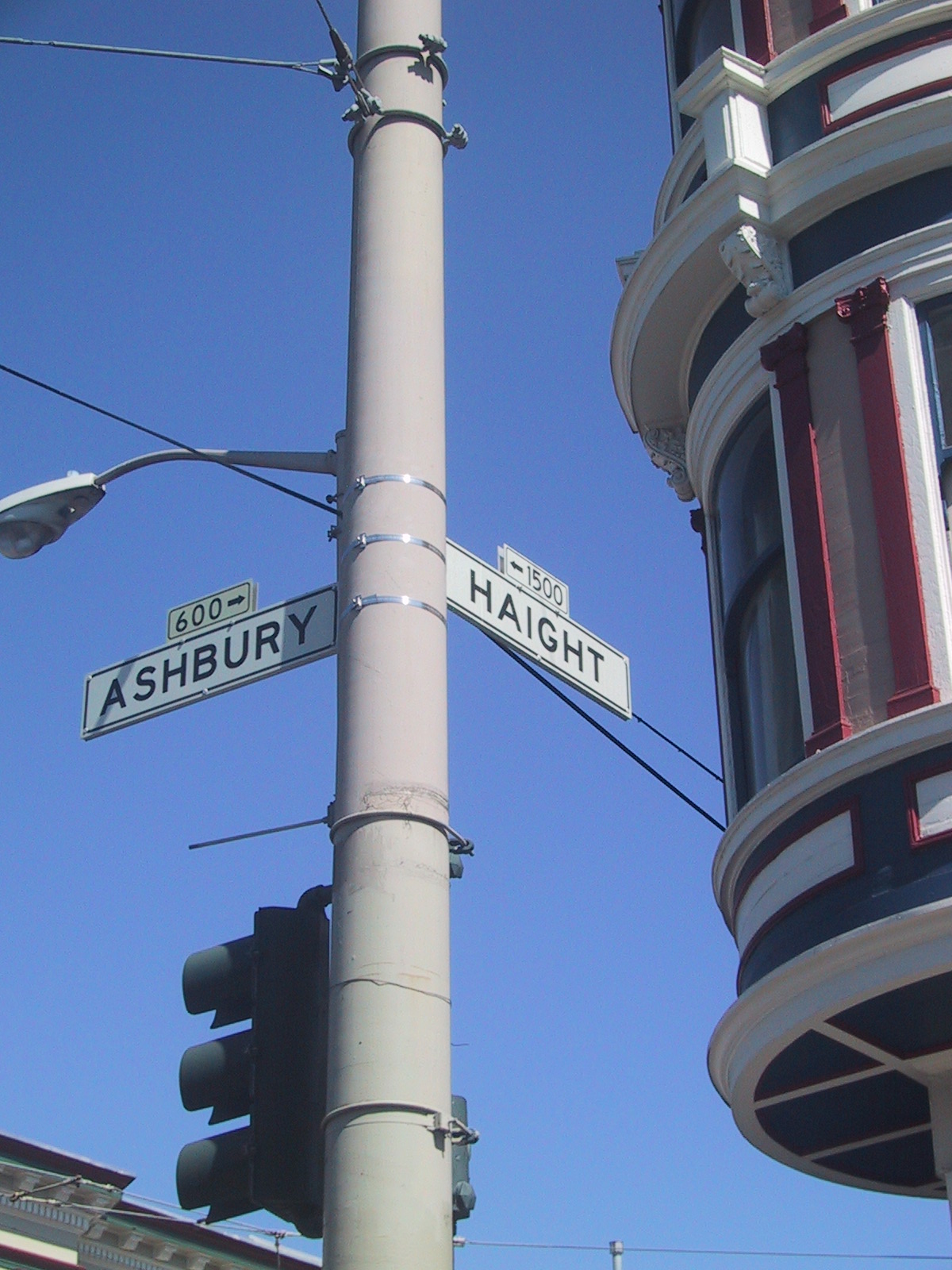|
The Beatles In Bangor
In late August 1967, the English rock band the Beatles attended a seminar on Transcendental Meditation (TM) held by TM creator Maharishi Mahesh Yogi at Bangor Normal College in Bangor, Wales. The visit attracted international publicity for Transcendental Meditation and presented the 1960s youth movement with an alternative to psychedelic drugs as a means to attaining higher consciousness. The Beatles' endorsement of the technique followed the band's incorporation of Indian musical and philosophical influences in their work, and was initiated by George Harrison's disillusionment with his visit to San Francisco's Haight-Ashbury district in early August. The British press gave the nickname "the Mystical Special" to the train that transported the Beatles from London to Bangor, and some reacted with suspicion to the band's sudden devotion to the Maharishi. The four band members were accompanied by their partners and by fellow artists such as Mick Jagger, Marianne Faithfull and Cill ... [...More Info...] [...Related Items...] OR: [Wikipedia] [Google] [Baidu] |
Bangor Normal College
The Normal College, Bangor () was an independent teacher training college, founded in 1858. It was created through the efforts of the British and Foreign School Society and the educator Sir Hugh Owen, and was funded by £11,000 raised through subscription and £2,000 of Government money. Teaching began on temporary premises in January 1858 and the College opened on its permanent site in 1862. In 1979 it changed its name to ''Y Coleg Normal, Bangor'' or in English: The Normal College, Bangor. In 1996 it became part of University College of North Wales (now Bangor University). History The term " normal school" originated in the early 16th century from the French ''école normale''. The French concept of an "école normale" was to provide a model school with model classrooms to teach model teaching practices to its student teachers, thus acting as a teacher training institute. The Normal College in Bangor was originally set up through the efforts of the local community and Sir H ... [...More Info...] [...Related Items...] OR: [Wikipedia] [Google] [Baidu] |
John Lennon
John Winston Ono Lennon (born John Winston Lennon; 9 October 19408 December 1980) was an English singer-songwriter, musician and activist. He gained global fame as the founder, co-lead vocalist and rhythm guitarist of the Beatles. Lennon's Lennon–McCartney, songwriting partnership with Paul McCartney remains the most successful in history. Born in Liverpool, Lennon became involved in the Skiffle revival, skiffle craze as a teenager. In 1956, he formed the Quarrymen, which evolved into the Beatles in 1960. Lennon initially was the group's ''de facto'' leader, a role he gradually seemed to cede to McCartney, writing and co-writing songs with increasing innovation, including "Strawberry Fields Forever", which he later cited as his finest work with the band. Lennon soon expanded his work into other media by participating in numerous films, including ''How I Won the War'', and authoring ''In His Own Write'' and ''A Spaniard in the Works'', both collections of literary nonsense, ... [...More Info...] [...Related Items...] OR: [Wikipedia] [Google] [Baidu] |
Within You Without You
"Within You Without You" is a song by the English rock band the Beatles from their 1967 album '' Sgt. Pepper's Lonely Hearts Club Band''. Written by lead guitarist George Harrison, it was his second composition in the Indian classical style, after "Love You To", and inspired by his stay in India in late 1966 with his mentor and sitar teacher Ravi Shankar. Recorded in London without the other Beatles, it features Indian instrumentation such as sitar, tambura, dilruba and tabla, and was performed by Harrison and members of the Asian Music Circle. The recording marked a significant departure from the Beatles' previous work; musically, it evokes the Indian devotional tradition, while the overtly spiritual quality of the lyrics reflects Harrison's absorption in Hindu philosophy and the teachings of the Vedas. The song was Harrison's only composition on ''Sgt. Pepper'', although his endorsement of Indian culture was further reflected in the inclusion of yogis such as Paramahansa ... [...More Info...] [...Related Items...] OR: [Wikipedia] [Google] [Baidu] |
Indian Classical Music
Indian classical music is the art music, classical music of the Indian subcontinent. It is generally described using terms like ''Shastriya Sangeet'' and ''Marg Sangeet''. It has two major traditions: the North Indian classical music known as ''Hindustani classical music, Hindustani'' and the South Indian expression known as ''Carnatic classical music, Carnatic''. These traditions were not distinct until about the 15th century. During the period of Mughal Empire, Mughal rule of the Indian subcontinent, the traditions separated and evolved into distinct forms. Hindustani music emphasizes improvisation and exploration of all aspects of a raga, while Carnatic performances tend to be short composition-based. However, the two systems continue to have more common features than differences. Another unique classical music tradition from the eastern part of India is ''Odissi music'', which has evolved over the last two thousand years. The roots of the classical music of India are found ... [...More Info...] [...Related Items...] OR: [Wikipedia] [Google] [Baidu] |
Utopia
A utopia ( ) typically describes an imagined community or society that possesses highly desirable or near-perfect qualities for its members. It was coined by Sir Thomas More for his 1516 book ''Utopia (book), Utopia'', which describes a fictional island society in the New World. Hypothetical utopias focus on, among other things, equality in categories such as economics, government and justice, with the method and structure of proposed implementation varying according to ideology. Lyman Tower Sargent argues that the nature of a utopia is inherently contradictory because societies are not homogeneous and have desires which conflict and therefore cannot simultaneously be satisfied. To quote: The opposite of a utopia is a dystopia. Utopian and dystopian fiction has become a popular literary category. Despite being common parlance for something imaginary, utopianism inspired and was inspired by some reality-based fields and concepts such as utopian architecture, architecture, Cyber-ut ... [...More Info...] [...Related Items...] OR: [Wikipedia] [Google] [Baidu] |
Summer Of Love
The Summer of Love was a major social phenomenon that occurred in San Francisco during the summer of 1967. As many as 100,000 people, mostly young people, hippies, beatniks, and 1960s counterculture figures, converged in San Francisco's Haight-Ashbury district and Golden Gate Park. More broadly, the Summer of Love encompassed hippie culture, spiritual awakening, hallucinogenic drugs, anti-war sentiment, and free love throughout the West Coast of the United States, and as far away as New York City. * * * * An episode of the PBS documentary series '' American Experience'' referred to the Summer of Love as "the largest migration of young people in the history of America". Hippies, sometimes called flower children, were an eclectic group. Many opposed the Vietnam War, were suspicious of government, and rejected consumerist values. In the United States, counterculture groups rejected suburbia and the American way and instead opted for a communal lifestyle. Some hippies ... [...More Info...] [...Related Items...] OR: [Wikipedia] [Google] [Baidu] |
Counterculture Of The 1960s
The counterculture of the 1960s was an anti-establishment cultural phenomenon and political movement that developed in the Western world during the mid-20th century. It began in the early 1960s, and continued through the early 1970s. It is often synonymous with cultural liberalism and with the various social changes of the decade. The effects of the movement"iarchive:cubanc 000104, Where Have All the Rebels Gone?" Ep. 125 of ''Assignment America''. Buffalo, NY: WNET. 1975.Transcript availablevia American Archive of Public Broadcasting.) have been ongoing to the present day. The aggregate movement gained momentum as the civil rights movement in the United States had made significant progress, such as the Voting Rights Act of 1965, and with the intensification of the Vietnam War that same year, it became revolutionary to some. As the movement progressed, widespread social tensions also developed concerning other issues, and tended to flow along generational lines regarding Individu ... [...More Info...] [...Related Items...] OR: [Wikipedia] [Google] [Baidu] |
Hippie
A hippie, also spelled hippy, especially in British English, is someone associated with the counterculture of the 1960s, counterculture of the mid-1960s to early 1970s, originally a youth movement that began in the United States and spread to different countries around the world. The word ''Etymology of hippie, hippie'' came from ''Hipster (1940s subculture), hipster'' and was used to describe beatniks who moved into New York City's Greenwich Village, San Francisco's Haight-Ashbury district, and Chicago's Old Town, Chicago, Old Town community. The term ''hippie'' was used in print by San Francisco writer Michael Fallon, helping popularize use of the term in the media, although the tag was seen elsewhere earlier. The origins of the terms ''Hip (slang), hip'' and ''hep'' are uncertain. By the 1940s, both had become part of African-American culture, African American Glossary of jive talk, jive slang and meant "sophisticated; currently fashionable; fully up-to-date". The Beats adopted ... [...More Info...] [...Related Items...] OR: [Wikipedia] [Google] [Baidu] |
Guru
Guru ( ; International Alphabet of Sanskrit Transliteration, IAST: ''guru'') is a Sanskrit term for a "mentor, guide, expert, or master" of certain knowledge or field. In pan-Indian religions, Indian traditions, a guru is more than a teacher: traditionally, the guru is a reverential figure to the disciple (or ''wikt:शिष्य, shisya'' in Sanskrit, literally ''seeker [of knowledge or truth'']) or student, with the guru serving as a "counsellor, who helps mould values, shares experiential knowledge as much as Knowledge#Hinduism, literal knowledge, an Role model, exemplar in life, an inspirational source and who helps in the spiritual evolution of a student". Whatever language it is written in, Judith Simmer-Brown says that a tantra, tantric spiritual text is often codified in an obscure twilight language so that it cannot be understood by anyone without the verbal explanation of a qualified teacher, the guru. A guru is also one's spiritual guide, who helps one to discover the ... [...More Info...] [...Related Items...] OR: [Wikipedia] [Google] [Baidu] |
Pattie Boyd
Patricia Anne Boyd (born 17 March 1944) is an English model and photographer. She was one of the leading international models during the 1960s and, with Jean Shrimpton, epitomised the British female look of the era. Boyd married George Harrison in 1966, experiencing the height of the Beatles' popularity and sharing in their embrace of Indian religion, Indian spirituality. She divorced Harrison in 1977 and married mutual friend Eric Clapton in 1979; they divorced in 1989. Boyd inspired Harrison's songs "I Need You (Beatles song), I Need You", "If I Needed Someone", "Something (Beatles song), Something" and "For You Blue", and Clapton's songs "Layla", "Bell Bottom Blues (Derek and the Dominos song), Bell Bottom Blues" and "Wonderful Tonight". In August 2007, Boyd published her autobiography ''Wonderful Today'' (titled ''Wonderful Tonight'' in the United States). Her photographs of Harrison and Clapton, titled ''Through the Eye of a Muse'', have been widely exhibited. Early lif ... [...More Info...] [...Related Items...] OR: [Wikipedia] [Google] [Baidu] |
Ravi Shankar
Ravi Shankar (; born Robindro Shaunkor Chowdhury, sometimes spelled as Rabindra Shankar Chowdhury; 7 April 1920 – 11 December 2012) was an Indian sitar, sitarist and composer. A sitar virtuoso, he became the world's best-known expert of Hindustani classical music, Indian classical music in the second half of the 20th century, and influenced many musicians in India and throughout the world. Shankar was awarded India's highest civilian honour, the Bharat Ratna, in 1999. He is also the father of American singer Norah Jones and British-American musician and sitar player Anoushka Shankar. Shankar was born to a Bengalis, Bengali family in India, and spent his youth as a dancer touring India and Europe with the dance group of his brother Uday Shankar. At age 18, he gave up dancing to pursue a career in music, studying the sitar for seven years under court musician Allauddin Khan. After finishing his studies in 1944, Shankar worked as a composer, creating the music for the ''Apu Tr ... [...More Info...] [...Related Items...] OR: [Wikipedia] [Google] [Baidu] |









